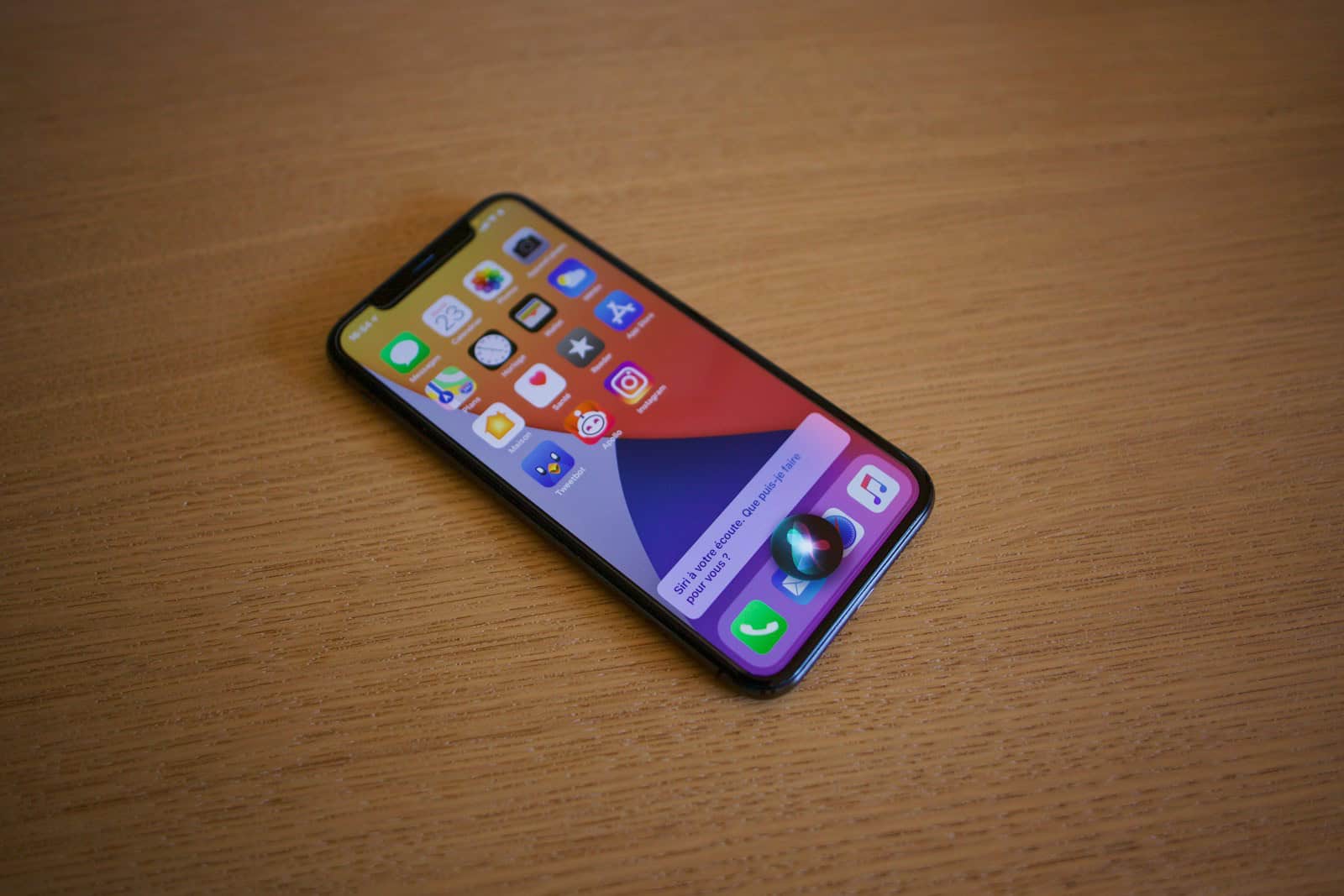Siri’s quiet voice can be frustrating when trying to use Apple’s virtual assistant. You can easily adjust Siri’s volume on your iPhone, iPad, Mac, HomePod, or Apple Watch using simple voice commands or device settings. This quick fix will help you hear Siri’s responses clearly and make the most of this helpful feature.
Low Siri volume often stems from device settings or environmental factors. Your iPhone or iPad may have its ringer volume turned down, affecting Siri’s output. On HomePod, background noise can cause Siri to lower its voice automatically. Understanding these common causes will help you troubleshoot and resolve the issue quickly.
Here’s a quick guide to adjusting Siri’s volume on different Apple devices:
| Device | Method to Increase Siri Volume |
|---|---|
| iPhone/iPad | Use side buttons or Settings app |
| Mac | Adjust in System Preferences |
| HomePod | Voice command or Home app |
| Apple Watch | Change in Watch Settings |
What To Do To Increase Siri Volume
It can be frustrating when Siri’s responses are too quiet to hear! Here are some of the most common reasons why your Siri might be too quiet and how to fix them:
1. Volume Settings
- Device Volume: The most obvious culprit is your device’s overall volume. Make sure it’s turned up enough. You can adjust this using the physical volume buttons on your iPhone or iPad.
- Siri’s Volume: You can actually tell Siri to adjust her own volume! Say “Hey Siri, speak louder” or “Hey Siri, speak up.”
- Ring/Silent Switch: If your iPhone or iPad is set to silent mode (the switch on the side shows an orange line), Siri will be very quiet. Toggle the switch to turn off silent mode.
2. “Hey Siri” Settings
- “Hey Siri” Sensitivity: If you’re using “Hey Siri” to activate Siri, the microphone might not be picking up your voice well. Try retraining “Hey Siri” in your device’s settings (Settings > Siri & Search > Listen for “Hey Siri”).
3. Audio Output
- Bluetooth Devices: If you’re connected to a Bluetooth device like headphones or a speaker, make sure the volume on that device is turned up.
- Headphone Jack: If you’re using wired headphones, ensure they’re properly plugged in and the volume is adjusted on the headphones themselves.
4. Accessibility Settings
- Sound Check: This feature (found in Settings > Music) normalizes audio levels across different apps and content. Sometimes this can make Siri seem quieter. Try turning Sound Check off.
- Mono Audio: If you have Mono Audio enabled (Settings > Accessibility > Audio/Visual > Mono Audio), it might be affecting Siri’s volume. Try turning it off.
5. Software Glitches
- Restart Your Device: A simple restart can often resolve temporary software issues that might be affecting Siri’s volume.
- Software Updates: Make sure your device is running the latest version of iOS or iPadOS. Software updates often include bug fixes and performance improvements.
6. HomePod Specifics
- Automatic Volume Adjustment: HomePod has a feature that adjusts Siri’s volume based on the room’s noise level. You can turn this off by saying, “Hey Siri, turn off automatic Siri volume.”
- HomePod Placement: Make sure your HomePod isn’t obstructed by anything that could muffle the sound.
If you’ve tried all these steps and Siri is still too quiet, there might be a hardware issue with your device’s speakers or microphone. In this case, it’s best to contact Apple Support or visit an Apple Store for assistance.
Understanding Siri’s Volume Mechanics
Siri’s volume control involves several interconnected factors. These include device settings, environmental conditions, and automatic adjustments that aim to optimize the user experience.
Interplay Between Siri Volume and Device Settings
Siri’s volume is linked to your device’s media volume. When you adjust the volume while Siri is speaking, you’re changing Siri’s volume specifically. This setting is separate from your ringtone or alarm volumes.
On iPhones and iPads, you can use the physical volume buttons or Control Center to modify Siri’s volume. For Apple Watch users, the process is slightly different. You’ll need to go to Settings > Siri > Voice Volume to make adjustments.
HomePod owners have a unique option. You can simply ask Siri to speak louder or quieter. This voice command allows for hands-free volume control.
Factors Impacting Siri’s Spoken Responses
Several elements affect how loud Siri sounds:
- Background noise
- Your distance from the device
- The type of request you’re making
Siri aims to be audible without being disruptive. In noisy environments, it may increase its volume automatically. Conversely, in quiet settings, it might lower its voice.
The nature of your request also plays a role. For instance, Siri might speak more softly when relaying private information like messages or reminders.
The Role of Automatic Volume Adjustment
Apple devices employ smart algorithms to adjust Siri’s volume dynamically. This feature is particularly noticeable on HomePods. The device automatically adjusts Siri’s response volume based on ambient noise and your proximity.
This automatic adjustment aims to ensure Siri is always audible without being too loud. It takes into account factors like room acoustics and background sounds.
However, if you find these automatic adjustments unsatisfactory, you can override them. On HomePods, you can set a specific volume percentage for Siri using voice commands.
| Device | Volume Control Method |
|---|---|
| iPhone/iPad | Volume buttons, Control Center |
| Apple Watch | Settings menu |
| HomePod | Voice commands, automatic adjustment |
Troubleshooting Low Volume Issues in Siri
Siri’s volume can sometimes be too low due to various settings or hardware problems. You can easily fix this issue by adjusting a few options or checking your device’s sound components.
Checking Accessibility Settings
To increase Siri’s volume, start by examining your device’s accessibility settings. Go to Settings > Accessibility > Siri and adjust the volume slider. You can also ask Siri to speak louder by saying “Hey Siri, speak louder” or “Hey Siri, set your volume to 80 percent.”
If Siri is still quiet, check your iPhone’s overall volume. Press the volume up button on the side of your device while Siri is speaking. This action specifically adjusts Siri’s volume.
For HomePod users, Siri automatically adjusts its volume based on ambient noise. If it’s too quiet, try moving closer to the device or reducing background noise.
Resolving Hardware Sound Problems
If adjusting settings doesn’t help, your device might have hardware issues. First, ensure your iPhone’s speaker isn’t blocked by a case or debris. Clean the speaker grilles gently with a soft-bristled brush.
Test your device’s sound with music or videos. If all audio is low, your speakers may need repair. Contact Apple Support for further assistance.
| Common Siri Volume Issues | Quick Fixes |
|---|---|
| Low volume in all apps | Check overall device volume |
| Only Siri is quiet | Adjust Siri volume in settings |
| HomePod Siri too soft | Move closer or reduce background noise |
| Sound issues persist | Clean speakers or seek repairs |
If problems continue, try restarting your device. This can often resolve minor software glitches affecting Siri’s performance.
Enhancing Siri Interaction and Comprehension
Improving your Siri experience involves refining pronunciation, retraining voice recognition, and tweaking settings. These steps can significantly boost Siri’s performance and your overall satisfaction with the virtual assistant.
Correcting Pronunciation and Response Accuracy
To enhance Siri’s understanding, focus on clear speech when giving commands. Speak at a moderate pace and enunciate words distinctly. If Siri misunderstands a name or place, you can teach it the correct pronunciation.
Open Contacts, select the name Siri struggles with, and tap “Add Field.” Choose “Pronunciation” and type how it should sound phonetically. For locations, use the Maps app to add a label with the correct pronunciation.
Practice using Siri in different environments to improve its accuracy. Try varying your tone and speed to find what works best. If Siri consistently mishears certain words, consider using synonyms or rephrasing your requests.
Retraining Siri to Recognize ‘Hey Siri’
If Siri doesn’t respond reliably to “Hey Siri,” retraining can help. Go to Settings > Siri & Search > Listen for “Hey Siri” and toggle it off, then on again. Follow the prompts to set up voice recognition anew.
During setup, speak naturally in your usual tone and environment. Vary your position relative to your device to improve detection from different angles. If you use Siri with multiple devices, retrain on each for best results.
Remember that background noise can affect Siri’s ability to hear you. Try to minimize interference when possible or move closer to your device in noisy settings.
Adjusting Siri Settings for Optimized Use
Fine-tune Siri’s behavior by adjusting its settings. Go to Settings > Siri & Search to access various options. You can change Siri’s voice, language, and accent to your preference.
Control when and how Siri responds by tweaking the following:
| Setting | Function |
|---|---|
| Listen for “Hey Siri” | Enables voice activation |
| Press Side Button for Siri | Allows manual activation |
| Allow Siri When Locked | Controls access on lock screen |
| Show Apps Behind Siri | Keeps background visible |
Enable “Always Show Siri Captions” for visual feedback. This helps in noisy environments or if you prefer reading responses. Adjust Siri’s speaking rate in Accessibility settings for a more comfortable interaction pace.
Integrating Siri Across Apple Devices
Apple’s intelligent assistant Siri works seamlessly across various devices. This integration allows you to use voice commands for tasks on your iPhone, iPad, Mac, HomePod, and Apple Watch.
Ensuring Seamless Siri Experience on iPhone and iPad
To set up Siri on your iPhone or iPad, go to Settings > Apple Intelligence & Siri. Enable “Listen for ‘Hey Siri'” for hands-free activation. You can also press the side button to summon Siri.
Multiple devices might respond to “Hey Siri” if they’re nearby. To prevent this, place your iPhone or iPad face down. This stops it from responding to voice commands.
Siri can help with various tasks on these devices:
- Sending messages
- Making calls
- Setting reminders
- Controlling smart home devices
Utilizing Siri on Mac for Productivity
Siri on Mac boosts your productivity. To enable it, click the Apple menu > System Preferences > Siri. Choose a keyboard shortcut for quick access.
Siri can assist with:
- Finding files and documents
- Scheduling meetings
- Checking weather and sports scores
- Opening apps
Type to Siri is useful in quiet environments. Enable it in System Preferences > Accessibility > Siri.
The Convenience of Siri on HomePod and Apple Watch
HomePod and Apple Watch offer hands-free Siri access. On HomePod, Siri can play music, control smart home devices, and answer questions.
To use Siri on Apple Watch:
- Raise your wrist
- Say “Hey Siri”
- Or press and hold the Digital Crown
Siri on Apple Watch helps with:
- Setting timers and alarms
- Sending quick messages
- Checking notifications
| Device | Activation Method | Key Features |
|---|---|---|
| iPhone/iPad | “Hey Siri” or side button | Messages, calls, reminders |
| Mac | Keyboard shortcut | File search, scheduling |
| HomePod | “Hey Siri” | Music, smart home control |
| Apple Watch | Raise to wake, Digital Crown | Quick actions, notifications |
Frequently Asked Questions
Adjusting Siri’s volume and resolving issues with its audio output are common concerns for many users. Here are some key solutions to help you optimize Siri’s voice on your devices.
How can I adjust Siri’s volume on my iPhone?
You can change Siri’s volume using the side buttons while Siri is active. Open Control Center and use the volume slider. You can also ask Siri to “speak louder” or “speak quieter” to adjust its volume.
What can cause Siri to sound muffled on my device?
A dirty speaker grille or software glitch can make Siri sound muffled. Clean your device’s speaker gently. Restart your iPhone to fix potential software issues. Check for iOS updates that might address audio problems.
What should I do if Siri is too quiet on CarPlay?
Check your car’s audio settings. Ensure the volume is up for both your car’s system and your iPhone. Disconnect and reconnect your iPhone to the CarPlay system. Update your iPhone’s software to the latest version.
How can I resolve issues with Siri’s volume not working properly?
Update your iPhone’s software to the latest version. Reset all settings on your device. If problems persist, contact Apple Support for further assistance. They may need to check for hardware issues.
Why is Siri not reading out loud when prompted?
Check your Siri settings. Go to Settings > Siri & Search > Siri Responses. Ensure “Spoken Responses” is turned on. Verify that your device isn’t in silent mode. Restart your iPhone if the issue continues.
How can I make Siri speak louder when using AirPods?
Adjust the volume using the controls on your AirPods while Siri is speaking. Ask Siri to “speak louder” or increase the volume. Check AirPods settings in the Bluetooth menu to ensure volume limits aren’t set too low.
| Device | Method to Adjust Siri Volume |
|---|---|
| iPhone | Side buttons, Control Center |
| HomePod | Voice command, Home app |
| CarPlay | Car audio system, iPhone volume |
| AirPods | On-device controls, voice command |







